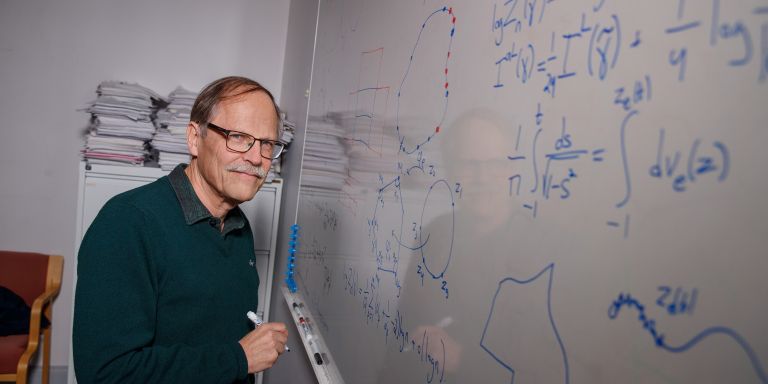
Kurt Johansson
Professor of Mathematics
Wallenberg Scholar
Institution:
KTH Royal Institute of Technology
Research field:
Mathematical physics and probability theory


Wallenberg Scholar
Institution:
KTH Royal Institute of Technology
Research field:
Mathematical physics and probability theory
Johansson recently had reason to revisit his doctoral dissertation, which he defended in 1988 at Uppsala University. The impulse to look back came to him when he was asked to write an article for a memorial volume dedicated to a colleague.
His article highlights some mathematical questions related to problems his colleague had worked on. These included issues he had addressed in his dissertation published nearly forty years ago.
“As I looked back, I was struck by the parallels with the research some of my colleagues are working on today. This marked the beginning of a new direction in my own research,” says Johansson.
The renewal of the Wallenberg Scholar grant enables him to pursue this new direction. He is doing so in collaboration with his colleague Fredrik Wiklund, also a Wallenberg Scholar. Very simply put, they are developing mathematical questions that can explain how the shape of a closed curve affects the behavior of a Coulomb gas.
A Coulomb gas is a collection of electrically charged particles that all repel each other. This state occurs naturally and plays a central role in many physical phenomena and technological applications. But it is the mathematical aspects that are of interest to the two professors.
They have jointly published results describing how the geometry of a closed curve (e.g., angles and corners) influences the statistical behavior of particles in the Coulomb gas. The research marks an important step forward in our understanding and can open new doors in other areas, particularly in theoretical physics.
But Johansson emphasizes that he is mainly interested in the mathematical problems and solutions.
“Even though there are links to physics, my focus is not on the physics itself but on increasing mathematical understanding.”
One aspect that sparked interest in this research direction was the “Loewner energy”. This is a mathematical concept that is used to quantify geometric curves and has opened the possibility of forging links with other mathematical areas.
“If you find a mathematical property that appears in various contexts, there is an opportunity to connect different parts of mathematics. We are always looking for ways to generalize, since it can lead to parallel progress in multiple areas,” says Johansson.
These days, progress in mathematics requires bridge-building as well as dynamic international collaboration. When Kurt Johansson hosts our visit to his office at KTH Royal Institute of Technology, the corridors around him are empty. This is due to a semester-long symposium held during the fall at the Mittag-Leffler Institute in Stockholm. Today’s workshop topic is being attended by most of his colleagues.
The Mittag-Leffler Institute is one of the world’s leading mathematical research institutes and an important platform for mathematical research.
As a mathematician, it is important to be surrounded by colleagues doing work related to yours. You need a mathematical environment to make progress.
“It’s important to have access to strong research environments so we can meet in person and share ideas and knowledge with each other. Being able to meet and work together means a lot and also leads to new collaborations.”
Sharing new advances also yields renewed approaches to solving older problems, as in the example of his dissertation.
“There are plenty of unsolved problems in mathematics, but you have to find problems where you have an angle or approach that can make a difference. Only then do you have a chance of contributing to a greater understanding.”
A central aim of his research is to contribute to the knowledge of random patterns and models. He uses dominos as an example. Even if the dominos are laid entirely at random, certain macroscopic patterns always emerge. The goal is to use mathematics to understand why this happens.
“This phenomenon can be seen in crystals in nature: random patterns that are universal in the sense that they appear completely unrelated to each other,” he says.
These questions are currently being addressed mainly by his former doctoral students and postdocs. A strong research environment has also developed around Johansson’s specialty in his department at KTH. He is now in the process of recruiting more postdocs for the research.
As for himself, he felt an attraction to science even as a teenager.
“I was probably 12–13 years old when I became interested in stars and astronomy. But to understand anything about it, you need to know physics. Then it turned out I was pretty good at mathematics, so that eventually took over.”
He studied the high school mathematics curriculum on his own when he was still in middle school.
“At that age, you discover new worlds and are driven by the desire to learn more. The same goes for poetry and literature. You are drawn to knowledge, and for me, there was also an allure in the challenges that mathematics posed,” says Johansson.
Text Magnus Trogen Pahlén
Translation Maxwell Arding
Photo Magnus Bergström